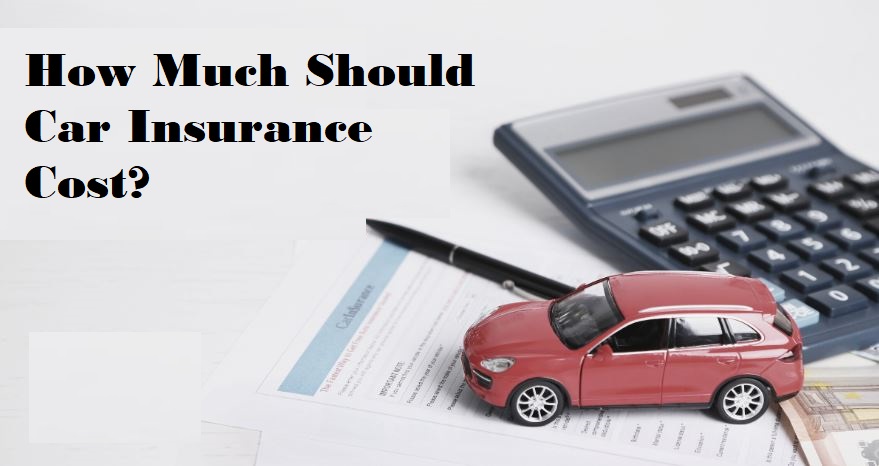In most states, car insurance is a mandatory requirement to drive a car legally. While you may strive to be a safe driver, accidents can happen unexpectedly.
Hence, it’s necessary to have adequate coverage to protect yourself and others after an accident. However, car insurance can be quite expensive, and its cost varies depending on multiple factors such as your location, car type, age, gender, and credit history.
To determine the average cost of car insurance, you need to consider these factors. Once you have an idea of the costs, you can explore ways to reduce your premium.
Having a good understanding of the different coverages can help you strategize and find ways to afford car insurance while saving money at the same time.

The Average Price of Car Insurance in the United States
Car insurance rates are influenced by various factors, making it a challenge to determine the exact average cost of insurance. The types of coverage you opt for in your policy can impact the cost.
Generally, full-coverage car insurance costs around $1,588 annually on average. This coverage typically includes liability, collision, comprehensive, and uninsured/underinsured motorist coverage.
However, if you choose a minimum-coverage policy, you could potentially save on car insurance expenses. The minimum coverage typically varies based on your location and meets your state’s minimum requirements to drive legally.
While going for a state minimum coverage might help you save money, it’s important to note that the state you reside in could significantly impact your budget.
Florida, Louisiana, New York, and Michigan are among the most expensive states for car insurance, with North Dakota, North Carolina, Iowa, and Idaho being the cheapest states.
Maine is the least expensive state, with an average car insurance rate of $696. It’s advisable to get insurance quotes from various providers to help you find the cheapest rate, regardless of where you live.
What’s a Car Insurance Premium, and How Is It Calculated?
To be a responsible driver, it is important to have car insurance. This means you will need to pay a premium to your insurance provider.
A car insurance premium is the amount of money you are required to pay either monthly or every six months as a lump sum. In return for this payment, insurance companies will provide you with car insurance coverage.
Insurance companies will calculate your insurance rate according to several factors such as personal information and vehicle details.
When your auto policy is up for renewal, they will reassess your information and consider any new changes, including alterations to your driving record or credit score. You have the option to either renew your existing insurance policy or search for lower rates.
6 Factors That Influence Car Insurance Costs
It’s essential to be aware of the factors that influence car insurance prices to avoid getting surprised by an expensive premium.
Auto insurance companies assess these factors to determine individual drivers’ rates, and some of them might be beyond your control.
Therefore, it’s crucial to consider the following six factors that affect car insurance costs to understand how they can impact your rates.
Age
Car insurance rates for drivers under 21 are typically high due to the increased risk of accidents. Unfortunately, teenage drivers are more likely to cause fatal crashes than drivers aged 20 and above.
However, if you are a teenage driver, you may still be eligible for discounts for maintaining good grades or safe driving. Completing a driver’s education course can also help you qualify for these discounts.
Insurance companies consider the lack of driving experience in young drivers, which can also affect their premiums. Drivers with more experience are less likely to have traffic violations or cause car accidents, resulting in lower insurance premiums.
However, the opposite is true for older adult drivers, especially seniors aged 65 or older. As you age, your likelihood of causing a traffic accident increases, which may result in higher premiums.
Gender
Insurance companies may take gender into account when calculating your insurance rate, especially if you are a young driver.
Young female drivers typically have lower premiums than young male drivers because they are generally safer on the road. On the other hand, if you are a young male driver, you should expect to pay a higher rate as insurance companies view you as more likely to take risks while driving.
As you reach your 30s, the gender gap in insurance rates tends to even out. Several states have implemented a ban on gender discrimination in auto policies.
If you are a resident of California, Hawaii, Massachusetts, North Carolina, Montana, Pennsylvania, Delaware, or Michigan, your gender should not affect your insurance rate. However, it’s advisable to verify state laws in case there are any exceptions to the rule.
State of Residence
Auto insurance rates can differ based on the state where you live. Every state has specific laws and regulations related to car insurance coverage, including a minimum requirement for liability insurance.
For instance, in North Carolina, the minimum auto liability coverage required for resident drivers is $30,000 for bodily injury per person and $60,000 for total bodily injury per accident.
Additionally, your zip code can impact the cost of car insurance as certain areas are more prone to damage from natural disasters such as floods or wildfires. Similarly, areas with high crime rates can also affect insurance rates. Areas with high-risk zip codes are likely to have higher average car insurance rates.
Vehicle Type
The type of car you own can affect the cost of your car insurance. Your insurance provider will require information about your vehicle, such as its age and mileage, to determine your monthly premium. If your car is older, it may not have important safety features like airbags or anti-theft devices.
This can lower your car insurance rate. However, if you add these features to your car, you may become eligible for cheaper insurance.
On the other hand, brand-new cars, luxury vehicles, and sports cars are generally expensive to replace in case of an accident. Because of their high value, you will likely pay higher rates for car insurance.
Therefore, it is advisable to choose a car that fits your budget and lifestyle. Minivans and SUVs typically have lower rates than coupes and sedans.
Driving Record
If you are a safe driver, many insurance providers offer discounts, especially if you have a clean driving record. However, if you have multiple traffic violations or points against your driver’s license, it is likely that you will have to pay a higher rate.
Your auto insurance company may consider you a liability to insure if you have a poor driving record or if you file many insurance claims throughout the year or have several filed against you.
However, you can lower your premium by taking a defensive driving course, if your insurance company offers this discount.
Credit Score
One effective way to obtain affordable car insurance rates is by having a good credit score. Several insurance companies offer credit-based insurance policies, which utilize your credit rating to determine your probability of filing a claim.
A credit score of 670 or higher is regarded as a good credit score by insurance companies. The higher your credit score, the less likely you are to pay high premiums.
If you have a low credit score, there is no need to worry. However, it’s important to be aware of the benefits of having good credit, such as lower car insurance premiums, and to work towards enhancing your score.
What Happens If You’re Not Insured?
It may seem like a good idea to skip out on car insurance in order to save money, but this choice can actually end up costing you more in the long run than if you were to get the cheapest available auto insurance. Furthermore, in some states, it is against the law to drive without insurance.
If you are caught driving without insurance in one of these states, you can be given a hefty fine by the police. Additionally, if you continue to drive without insurance, your driver’s license could be suspended. For instance, Delaware may fine you up to $1,500 and suspend your license for six months.
It is highly recommended that you, at the very least, obtain the minimum required amount of coverage, as this can also help you avoid having your vehicle impounded.
What Are the Types of Car Insurance Coverage?
A full-coverage policy can result in higher insurance rates. However, some of the coverages are optional, and removing them can lower your car insurance premium. To better understand your auto policy, check out the different types of car insurance.
Liability
Liability coverage is a type of car insurance that pays for the medical bills and property damage of other people if you are found to be at fault in a car accident.
This coverage also pays for your legal fees if you get sued for causing a car crash. Liability coverage is mandatory in most states, so it is important to have this type of insurance.
Collision
Collision coverage is a type of car insurance that pays for any damage to your vehicle. This coverage applies whether the damage is the result of a single-car or multi-car accident, or if you hit a stationary object.
It is commonly purchased by people who lease or have a car loan. However, if you can afford to replace your car in the event of a bad accident, you may want to consider dropping this coverage to save money.
Comprehensive
Comprehensive insurance is an optional coverage that takes care of any damage to your vehicle that did not result from a collision. This coverage can include vandalism or damage caused by natural disasters such as flooding.
If you don’t mind paying for these damages out of pocket, you can remove the comprehensive coverage from your insurance policy.
However, it is recommended that you keep this coverage if you cannot afford to pay for future repairs or if you live in a high-risk geographical area.
For instance, if a tree gets knocked down by the wind and the branches smash your car’s windows, you don’t need to worry as comprehensive coverage will pay for the repair costs.
Uninsured/Underinsured Motorist
Accidents can happen, and they can be even worse if an uninsured driver is responsible. If the driver doesn’t have insurance, it can be difficult for you to receive compensation for any damage they caused.
Uninsured motorist coverage can help in this situation by paying for your medical bills and related expenses. In some states, it can also cover the cost of repairing your vehicle.
This coverage can also apply if the other driver who caused the accident doesn’t have enough liability insurance to pay for your expenses.
Personal Injury Protection
It is possible that the state where you reside may require you to have personal injury protection (PIP) auto insurance. However, even if it is not mandatory, it is a good coverage to have if it is available.
PIP insurance covers the medical expenses of both you and your passengers in case of an accident. Furthermore, it may also cover other expenses such as income loss or necessary childcare expenses if they are qualified expenses.
Medical Payments
Medical payments (MedPay) coverage is a type of insurance that is similar to Personal Injury Protection (PIP). However, it is more targeted towards healthcare costs. This coverage can help pay for your healthcare deductibles and copays.
Even though it is not mandatory in most states, you could still benefit from this coverage if you ever end up in the hospital. Only Maine and New Hampshire require MedPay coverage. If your state allows it, you can choose to forego this coverage and pay for any medical expenses out of pocket.
Shop Around for Cheaper Car Insurance
It is possible to find affordable car insurance that meets your driving needs, regardless of the average cost. To begin your search, start by speaking with your current insurance agent.
There may be discounts available to you that you are not aware of. You could also try increasing your deductible amount, which will lower your monthly premium. Additionally, you can compare prices from different providers to find the best deal.
When determining the average rate of car insurance, consider the most important factors. Do you live in a costly state or zip code? If so, it may be worth moving. Do you have good credit or are you a safe driver?
Consult with your car insurance company to learn how to secure the lowest rates. Regardless, it is always a good idea to shop around and find the best coverage for you.






